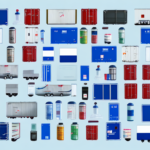Introduction to FedEx Cold Shipping
When shipping temperature-sensitive items such as medical supplies, food products, and certain electronics, choosing the right shipping method is crucial. Cold shipping rates can be higher than traditional shipping rates, but they ensure that your products remain in optimal condition throughout the transportation process. This article delves into FedEx cold shipping rates, explaining what cold shipping entails, how FedEx determines its rates, and providing strategies for saving on cold shipping costs.
What is Cold Shipping and Why It Matters
Understanding Cold Shipping
Cold shipping refers to the transportation of goods that require temperature control to maintain their quality and integrity. This includes items that need to be kept cold, such as medicines and vaccines, as well as perishable food products and certain chemicals. Conversely, some items may require warming during transit. Effective cold shipping is essential for maintaining the safety and effectiveness of these items from origin to destination.
The Importance of Cold Shipping
Cold shipping is vital because many products lose their efficacy or spoil when exposed to incorrect temperatures. For example, vaccines can degrade in effectiveness if not kept within specified temperature ranges. Similarly, food products can spoil, leading to significant financial losses and potential health risks. According to a report by the Global Cold Chain Market, the demand for temperature-controlled logistics is expected to grow steadily, highlighting the increasing importance of reliable cold shipping services.
FedEx Cold Shipping Services and Options
FedEx Cold Shipping Options
FedEx offers a variety of cold shipping services tailored to different needs:
- FedEx Cold Shipping: Ideal for shipping temperature-sensitive items with a guaranteed delivery timeframe.
- FedEx Temperature-Controlled Packaging: Suitable for shipments that require temperature control but are less time-sensitive.
- FedEx Custom Critical Temperature-Controlled Services: Provides customized solutions for highly sensitive shipments, including specialized packaging and transportation.
Additionally, FedEx offers SenseAware, a service that provides real-time monitoring and tracking of temperature-sensitive shipments. This ensures that customers are alerted to any temperature fluctuations or issues during transit.
Understanding and Determining FedEx Cold Shipping Rates
How FedEx Determines Cold Shipping Rates
FedEx's cold shipping rates are influenced by several key factors:
- The type of item being shipped and the specific temperature requirements.
- The distance the package needs to travel and the desired delivery timeframe.
- Additional services requested, such as special handling, higher levels of monitoring, or expedited delivery.
FedEx adheres to strict guidelines for cold shipping to ensure the safety and quality of the products. This includes using insulated packaging, gel packs, or dry ice to maintain required temperatures, and proper labeling to indicate that the package contains perishable or temperature-sensitive items.
Factors Affecting FedEx Cold Shipping Rates
Service Level and Delivery Timeframe
The level of service requested can significantly impact cold shipping rates. For example, same-day or overnight delivery options will generally cost more than standard shipping services. Urgent shipments require more resources and quicker transit times, contributing to higher costs.
Packaging and Insulation Requirements
The type of packaging and insulation needed plays a crucial role in determining the shipping rate. Items that are fragile or particularly sensitive to temperature changes may require specialized packaging materials, which can increase both the weight and size of the shipment, thereby raising the overall shipping cost.
Transportation Mode and Vehicle Type
The mode of transportation and the type of vehicle used for shipping also affect rates. For longer distances or international shipments, FedEx may utilize temperature-controlled airplanes or refrigerated trucks, which involve higher operational costs compared to standard shipping methods.
Preparing and Managing Your Cold Shipments
Proper Packaging and Labeling
To ensure the integrity of temperature-sensitive items, proper packaging is essential. This includes using insulated containers, gel packs, or dry ice as necessary. Clearly labeling your packages as "perishable" or "temperature-sensitive" helps FedEx handle them appropriately during transit.
Destination Considerations
Consider the climate and weather conditions at the destination when preparing your shipment. In regions with extreme temperatures, additional precautions such as extra ice packs or enhanced insulation may be necessary to maintain the required temperature throughout the shipping process.
Tips for Saving on FedEx Cold Shipping Costs
Plan Ahead
Advance planning allows you to choose more cost-effective shipping options. By selecting standard delivery times instead of expedited services, you can reduce shipping expenses without compromising the safety of your products.
Optimize Packaging Materials
Use the appropriate amount of packaging materials to maintain temperature control without adding unnecessary weight or bulk. Efficient packaging not only protects your items but also helps keep shipping costs down.
Leverage Discounts and Promotions
Take advantage of any discounts or promotions that FedEx may offer. Regular customers may be eligible for volume discounts, which can significantly reduce shipping costs over time.
Alternative Shipping Methods
If your items do not strictly require temperature-controlled environments, consider using standard shipping methods. This can be a more economical choice while still ensuring the safe delivery of your products.
Comparing FedEx Cold Shipping to Other Carriers
When evaluating cold shipping options, it’s important to compare FedEx’s rates and services with those of other carriers. Factors to consider include the level of temperature control, delivery speed, packaging quality, and overall reliability. While FedEx may offer premium services that justify slightly higher rates, other carriers might provide competitive pricing with adequate temperature control for specific needs.
For comprehensive comparisons, refer to industry reviews and customer testimonials from sources like Capterra or TrustRadius.
Impact of Weather on Cold Shipments
Extreme weather conditions can adversely affect cold shipments. FedEx monitors weather patterns to mitigate potential disruptions, but customers should also take proactive measures. In areas prone to severe weather, consider enhancing your packaging with additional insulation or selecting faster shipping options to minimize transit time.
For real-time weather updates and planning, refer to resources like the National Weather Service.
Conclusion: Optimizing Your FedEx Cold Shipping Experience
By understanding the factors that influence FedEx cold shipping rates and implementing best practices for packaging and shipment management, you can ensure the safe and cost-effective transportation of your temperature-sensitive items. Leveraging FedEx’s specialized services, such as temperature-controlled packaging and real-time monitoring, further enhances the reliability of your shipments.
Proper labeling, documentation, and proactive management are key to minimizing delays and maintaining product integrity. With careful planning and strategic choices, you can maximize the benefits of FedEx cold shipping services, ensuring your items arrive in optimal condition and at a reasonable cost.








